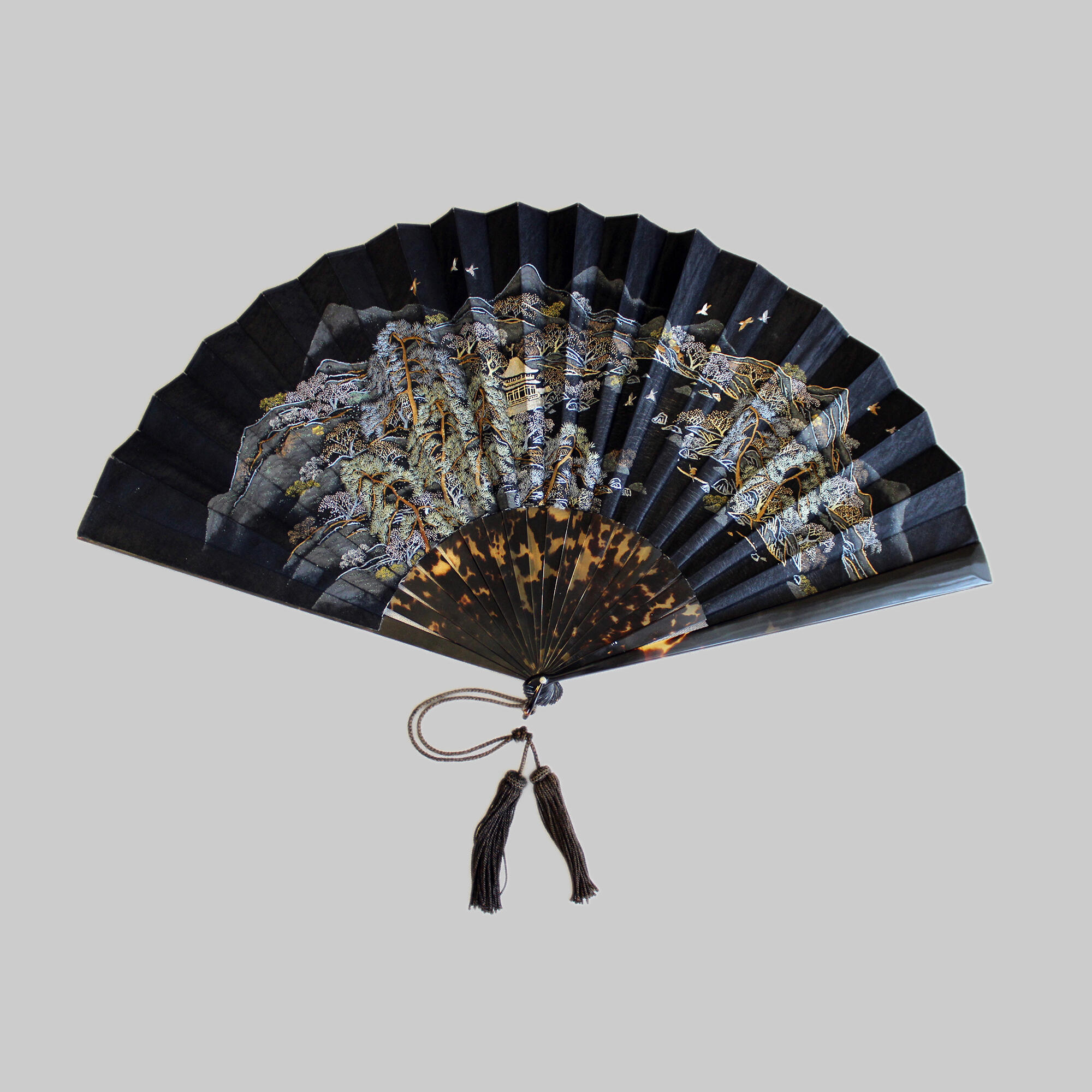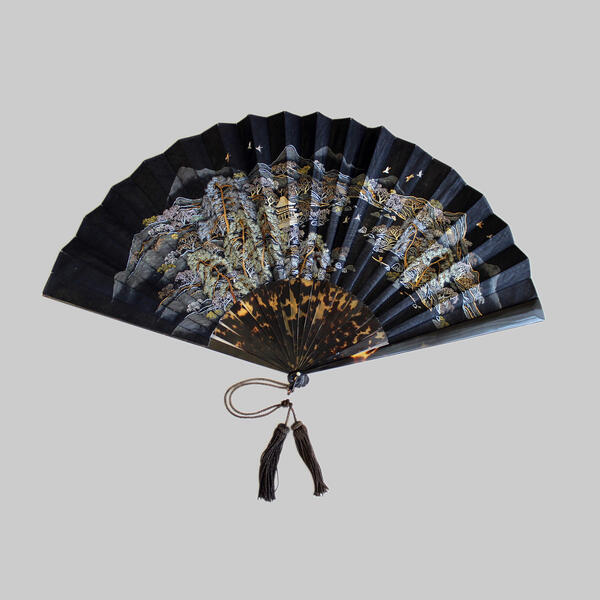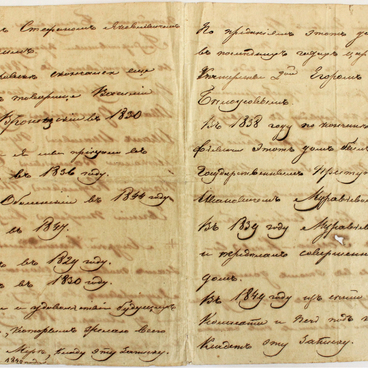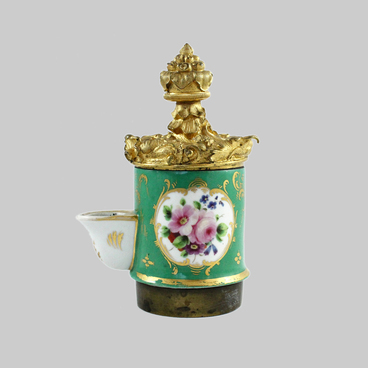The hand fan presented in this exhibition was made in 19th century Japan. It was purchased from the antique dealer Stepan Petrenko, especially for the exhibition in the house of the Decembrist Matvey Ivanovich Muravyov-Apostol. The fan consists of tortoiseshell plates with black parchment paper stretched between them. The composition is made complete by the contrast of the black and white elements. On one side there is a blossoming tree with white flowers, green leaves and birds. The other side is embroidered with silk threads, the basis of the plot ornament is a pagoda, trees, and birds. The end of the handle is decorated with a tassel half ring. The fan before you is considered a ‘plie’ type, which speaks to it’s folds. Fans of this type are created based on their frame, representing the lower part of the fan, with the upper part being the screen, which is made of paper, parchment, fabric, lace.
The history of the fan reaches back several thousand years. Traditionally, it’s roots trace back to China and Japan, as it was these countries that gave it the broad acknowledgment it has today. This accessory arrived in Europe in the 16th century, and was initially only available to the most notable people. The fan was considered a symbol of status, due to the fact that it required expensive materials and precious gems. European masters quickly picked up the Eastern trend, while it infiltrated all of high society as an exquisite accessory.
In Russia, the women’s fan saw widespread use at the beginning of the 18th century. Experts believe fans to be peers of St. Petersburg, since they entered secular life at the time of Peter’s secular dress reforms. At that time fans started to be created in Russia, and they were in no way inferior to Eastern and European products in terms of the quality of materials and their artistic merit. Fans were made by a variety of craftsmen: jewelers, engravers, painters, wood and bone carvers. As they grew in popularity, fans began to turn into real works of art. Gold, jade, ivory, turtle shell frames, animal horns, sandalwood and bamboo were used as material for frames of the fans. In the 19th century, such fans claimed a special role. The fan became a channel to express desires or flirt, relay to the other person your feelings or intentions.
The history of the fan reaches back several thousand years. Traditionally, it’s roots trace back to China and Japan, as it was these countries that gave it the broad acknowledgment it has today. This accessory arrived in Europe in the 16th century, and was initially only available to the most notable people. The fan was considered a symbol of status, due to the fact that it required expensive materials and precious gems. European masters quickly picked up the Eastern trend, while it infiltrated all of high society as an exquisite accessory.
In Russia, the women’s fan saw widespread use at the beginning of the 18th century. Experts believe fans to be peers of St. Petersburg, since they entered secular life at the time of Peter’s secular dress reforms. At that time fans started to be created in Russia, and they were in no way inferior to Eastern and European products in terms of the quality of materials and their artistic merit. Fans were made by a variety of craftsmen: jewelers, engravers, painters, wood and bone carvers. As they grew in popularity, fans began to turn into real works of art. Gold, jade, ivory, turtle shell frames, animal horns, sandalwood and bamboo were used as material for frames of the fans. In the 19th century, such fans claimed a special role. The fan became a channel to express desires or flirt, relay to the other person your feelings or intentions.



